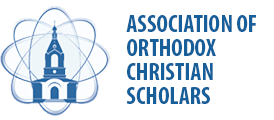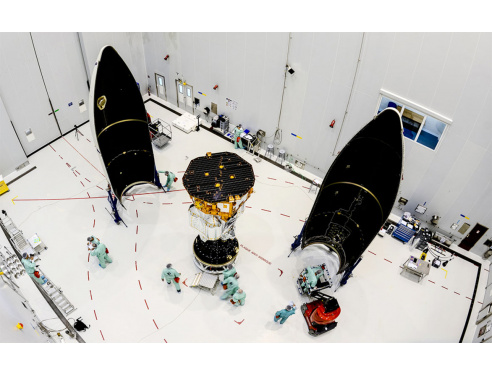Success of gravity-wave satellite paves way for three-craft mission
Europe’s gravitational-wave hunters are celebrating. On 1 July, a satellite will wrap up its mission to test technology for the pioneering quest to measure gravitational ripples in the stillness of space. Over the past year, the craft has performed much better than many had hoped. That success has convinced the European Space Agency (ESA) to give the go-ahead to a full-scale version able to sense cataclysmic events that can’t be felt on Earth.
The LISA Pathfinder mission, launched in late 2015, beat its precision target by a factor of 1,000 and quieted critics who have doubted its potential, says project scientist Paul McNamara, an astrophysicist at ESA in Noordwijk, the Netherlands. “This is not the impossible task that some people believed it was.”
Currently set to fly in 2034, the full-scale Laser Interferometer Space Antenna (LISA) will be the space analogue of the Laser Interferometer Gravitational-Wave Observatory (LIGO), two machines in the United States — each with a pair of 4-kilometre-long arms — that first detected the ripples by ‘hearing’ the merger of two black holes. LISA’s three probes will fly in a triangle, millions of kilometres apart, making the mission sensitive to much longer gravitational waves, such as the ripples produced by the collisions of even larger black holes.
The mission will bounce laser beams between the three LISA craft — or, more precisely, between test masses suspended in a vacuum inside each satellite. Taking advantage of the vibration-free conditions of space, it will measure tiny variations in the distances between the test masses that reveal the passage of space-warping gravitational waves.
LISA Pathfinder’s goal was to show that such variations could be measured in zero gravity and with a precision of one picometre, or one-billionth of a millimetre. High-precision thrusters adjusted Pathfinder’s route so that it would closely follow the gravitational free fall of two test masses inside the craft and not interfere with their orbit. At the same time, the probe bounced a laser beam between the two masses — a pair of 2-kilogram cubes made of a gold and platinum alloy — and measured fluctuations in their separation (see ‘Gravity laboratory’).
.jpg)
Credit: ATG medialab/ESA
The €400-million (US$447-million) probe was declared a success in February 2016, two weeks after LIGO announced its first detection. Pathfinder did not detect gravitational waves — which would not have appreciable effects over the short distance inside the probe — but it showed that it could detect motions 100 times smaller than the picometre requirement. Since then, the experiment’s performance has improved by another order of magnitude (M. Armano et al. Phys. Rev. Lett. 118, 171101; 2017).
By early June this year, LISA Pathfinder had almost run out of thruster fuel, and mission control used what was left to nudge the spacecraft out of its operating orbit and into its final orbit around the Sun. On 1 July, Pathfinder will stop collecting data, and the spacecraft will be put to sleep for good on 18 July.
Pathfinder was “a triumph”, says William Klipstein, a physicist at NASA’s Jet Propulsion Laboratory in Pasadena, California, who works on LISA development but was not involved in ESA’s Pathfinder mission. Its performance “removes the last major technical barrier for proceeding with a long-planned ESA-led gravitational-wave mission”, he says.
In a unanimous decision on 20 June, ESA’s Science Programme Committee officially selected LISA as the third of the agency’s large, or €1-billion-class, mission in its current science programme. The approval was long-awaited but had been in little doubt after Pathfinder’s success and LIGO’s gravitational-wave discoveries, says Karsten Danzmann, a director of the Max Planck Institute for Gravitational Physics in Hanover, Germany, and Pathfinder’s co-principal investigator.
The decision is not final, but it means that industrial partners will now be involved in detailed design and cost projections. Once those are finished, ESA will decide whether to ‘adopt’ the mission and commit the funding to build it. The United States — which was an equal partner in the mission until 2011, when it reduced its participation to save costs — is expected to provide important components.
ESA has chosen two other large missions to go ahead before LISA — one to the moons of Jupiter, slated to launch in 2022, and an X-ray observatory for 2028. This puts LISA on schedule to be launched in 2034. But Pathfinder principal investigator Stefano Vitale, a physicist at the University of Trento in Italy, and others hope that its schedule can be accelerated. ESA’s call for proposals to lead the gravitational-wave observatory — won by Vitale’s team — was put out in late 2016, instead of late 2019 as the agency had planned. Vitale and other gravitational-wave researchers hope the agency will push the launch date forward so that LISA can start sending back data before too many of the current key researchers have retired.

